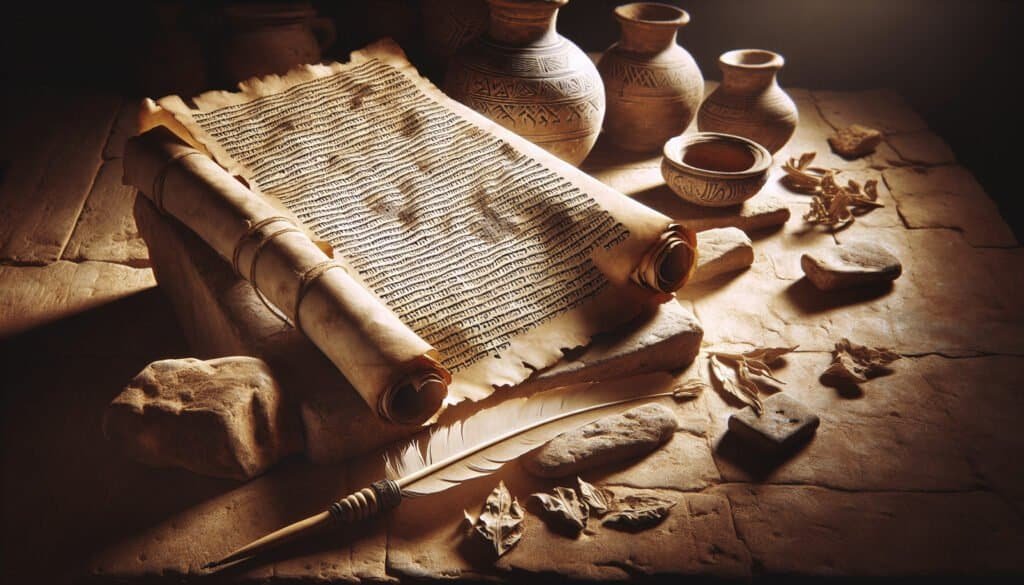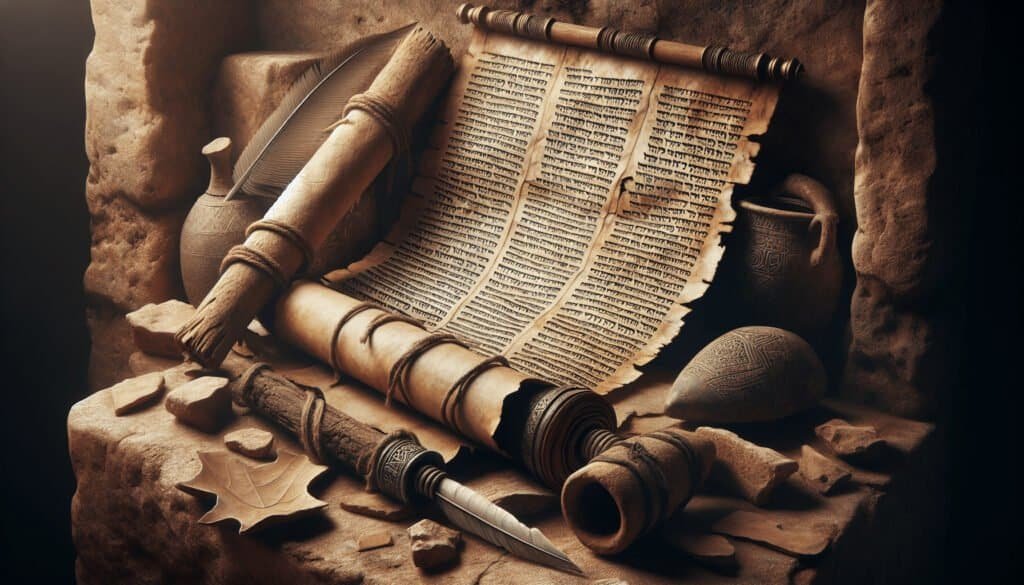What do you know about the Dead Sea Scrolls and their incredible journey through history? If you’re intrigued by archaeology, ancient texts, or the preservation of culture, you’re in for a treat. The Qumran sublevel and its methods of text preservation offer a fascinating glimpse into how ancient generations safeguarded their beliefs and stories. Let’s unpack this topic thoroughly, making it engaging yet informative for both the curious layperson and the academic enthusiast.

A Brief Introduction to Qumran
You might have heard of Qumran, a site located near the northwestern shore of the Dead Sea. This area is best known for the discovery of the Dead Sea Scrolls, which were unearthed between 1947 and 1956. These manuscripts, composed of various biblical texts, Jewish writings, and sectarian documents, provide invaluable insights into Judaism during the Second Temple period.
Historical Context of Qumran
To fully appreciate the significance of the Qumran sublevel, it’s crucial to understand the historical backdrop. This site is believed to have been inhabited by a group known as the Essenes, a monastic sect that sought to live out an ascetic lifestyle in the years leading up to the destruction of Jerusalem in 70 CE. The chaotic political environment of that era often pushed these communities to create and maintain their writings in secluded locations.
- Essenes and Their Beliefs: They were in search of spiritual purity and often viewed the world around them as corrupted. This intense focus on text and ritual made the preservation of their writings a top priority.
- Second Temple Judaism: The societal norms, religious practices, and theological debates present in this period deeply influenced the texts found at Qumran.
The Importance of Text Preservation
When you think of preservation, what comes to mind? Perhaps the meticulous archiving of documents or restoring artifacts in a museum. In the realm of ancient texts, however, preservation takes on a multifaceted meaning that goes beyond a simple act. It encompasses cultural identity, faith, and the transmission of knowledge across generations.
Reasons for Text Preservation
- Cultural Heritage: For the Essenes, their writings were more than mere texts; they represented their identity in a changing world. Maintaining these documents ensured that their beliefs and traditions endured.
- Religious Significance: The scrolls included religious texts such as biblical manuscripts and commentaries. These were key in understanding how they interpreted scripture in their time.
- Historical Record: The scrolls serve as a vital historical record that offers insight into life and belief systems over two millennia ago.
Modes of Preservation
So, how did the Essenes go about this vital task? Their methods were not just about storing texts; they employed various strategies to ensure that their written traditions did not fade into obscurity.

The Qumran Sublevel: An Imposing Archive
The Qumran sublevel refers to the network of caves and structures where these scrolls were stored and subsequently preserved. The architecture of the Qumran community reflects a thoughtful design meant to serve both practical and spiritual needs.
Construction Techniques
The building methods of the Qumran site reveal a lot about the community’s priorities. The location itself was strategically chosen for its isolation, offering a sense of security.
- Materials Used: Local limestone was commonly used, which might seem a little mundane, but it has contributed to the scrolls’ survival. The damp climate of the nearby Dead Sea also played a role.
- Cave Systems: Many of the scrolls were hidden in caves, away from prying eyes, possibly as a response to external threats.
Environmental Factors
The particular environment of Qumran was crucial in preserving the texts. Some aspects may sound like they are straight out of a naturalist’s handbook, but let’s break it down:
- Humidity: The moisture from the nearby Dead Sea created a unique microclimate that helped stave off the desiccation of the scrolls.
- Temperature: The consistent temperatures of the caves played a part in limiting the degradation caused by seasonal changes.
Preservation Techniques of the Essenes
The Essenes employed several specific techniques to ensure the longevity of their manuscripts:
- Use of Vellum and Papyrus: They often wrote on high-quality materials, such as vellum made from animal skins and papyrus. Both materials can withstand the test of time when handled properly.
- Inks and Writing Instruments: The inks used were made from natural substances, which aided in the durability of the writings. The choice of tools was also crucial; sharp reed pens allowed for clear marks.
Types of Texts Found at Qumran
Now that you have an understanding of the preservation methods, let’s talk about what was preserved! The variety of texts found at Qumran reflects the community’s diverse interests and beliefs.
Biblical Texts
One of the most intriguing aspects of the Dead Sea Scrolls is the inclusion of biblical texts. These ancient manuscripts offer an early glimpse into the Old Testament as we know it.
- Masoretic Text Comparison: Scholars have compared these manuscripts with the later Masoretic Text and found remarkable similarities that also highlight some differences, giving insight into the development of biblical texts.
Sectarian Writings
Not all the scrolls were biblical. Many were sectarian in nature, providing a window into the theological positions held by the Essenes.
- Community Rule: One of the prominent texts is the Community Rule, which lays out the regulations and beliefs of the sect.
- War Scroll: Another is the War Scroll, which expresses an apocalyptic vision of the future – a battle between the “Sons of Light” and the “Sons of Darkness.” It’s a fascinating study in the community’s worldview.
Other Writings
In addition to biblical and sectarian texts, the Qumran scrolls include writings that have been less discussed but are equally important in understanding the community.
- Psalms and Prayers: Various psalms and liturgical texts reveal information about the spiritual practices of the Essenes.
- Commentaries: These are interpretations of biblical texts that portray the community’s unique understanding of the scriptures.
Transmitting Knowledge Across Generations
What’s fascinating about the scrolls is not merely their age but how they managed to survive and transmit knowledge through time. The techniques employed by the Qumran community ensure that their writings could be preserved and shared.
Oral Tradition
Before the written word took dominance, oral traditions carried the weight of cultural history. The Essenes understood the importance of oral transmission intertwined with written documentation.
- Layers of Memory: Stories told by generation after generation provided a rich tapestry of understanding that complemented the written texts.
Scribes and Copying Practices
The role of scribes was vital in the preservation process. Think of them as the guardians of the written word.
- Careful Copying: Scribes were trained in meticulous copying practices that emphasized accuracy. Errors were often corrected on the spot, showing a commitment to the integrity of the text.
- Multiple Copies: It wasn’t enough to have a single copy of a crucial text; multiple versions were made to ensure that if one were to be lost or damaged, others could be referred to.
The Revival of Interest
The modern rediscovery of these ancient texts has generated renewed interest in their preservation methods.
- Digitization Efforts: In today’s world, the Dead Sea Scrolls are not just encased in glass; they’ve also made their way into the digital realm, allowing for greater accessibility while raising questions about preservation in a digital age.
Cultural, Theological, and Historical Significance
As we break down the complexities of the Qumran sublevel and its preservation methods, it’s essential to consider the broader implications of these practices.
Cultural Impact
The scrolls do not merely reside in a historical bubble. They have implications that resonate through culture today.
- Influence on Modern Judaism: The interpretation of texts uncovered at Qumran has had a lasting impact on Jewish thought and practice.
- Impact on Christian Doctrine: These texts have also influenced Christian theology, prompting discussions on New Testament writings and early Christian beliefs.
Theological Debates
The scrolls provide a fertile ground for theological debates that are still relevant today.
- Interpretation of Apostolic Writings: Scholars examine how early Christian writings align or contrast with the beliefs laid out in the Qumran manuscripts, contributing to ongoing discussions about faith.
Conclusion: Bridging Ancient Wisdom and Modern Perspectives
In summarizing the journey through the Qumran sublevel and its preservation methods, it’s essential to recognize that these ancient texts are more than archaeological finds; they are links to our collective past, informing our understanding of culture, faith, and history.
As you reflect on the careful techniques employed by the Essenes, consider the parallels in modern practices of preservation. Whether it’s the digital archiving of knowledge or the communal sharing of beliefs, the need to keep stories alive transcends time.
So, the next time you come upon an ancient text or even a modern book, recall the meticulous efforts of generations past to ensure that their voices echoed through time. Preservation isn’t just an act; it’s an enduring legacy.


